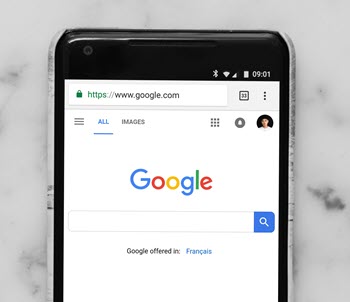Thanks to Spear Digital Media Director Tim DiSabatino for authoring this week’s post.
Because costs per click in B2B search campaigns can often be extremely high when companies compete the for same keywords, Search Engine Marketing (SEM) for B2B advertisers offers its own very unique challenges. Add in the fact that B2B sales cycles are typically long and complex (meaning that advertisers may not see ROI for weeks or months), and it becomes clear that thriving in today’s SEM landscape requires getting a lot of things right.
Here are the five most common “fails” we see in B2B search campaigns:
Not Bidding on the Correct Keywords.

The most obvious keywords in any B2B campaign are those with higher search volumes and higher-than-average costs per click, particularly in competitive niches. However, it’s not always, or even often, that those highly coveted keywords will be the most effective in the long run.
When beginning a new B2B paid search campaign, it’s impossible to tell which keywords will ultimately convert the best over time and generate the lowest cost per conversion. Because of this, in the early stages, campaigns should contain a mix of higher search volume/higher cost terms along with mid- and long-tail terms, i.e. those with a lower search volume and lower cost per click.
Over time, the keyword list can be refined to maximize budget share and impression share based on the search queries that are driving the most conversions. Failure to do this often results in wasted ad budget and spending valuable ad dollars on terms that generate expensive clicks but don’t convert at the same high rate.
Failure to Understand How Much You Can Pay to Acquire a Customer.
B2B clicks can be very expensive, but – depending on your product category and the cost of your solution – a high cost per click can actually be a bargain compared to the potential revenue that a new customer generates. The key to determining at what point an expensive click becomes TOO expensive is understanding a few key data points:
* Maximum Allowable Cost Per Lead (MACPL)
* Customer Lifetime Value (LTV)
* Customer Acquisition Cost (CAC)
If you’re optimizing your campaign based simply on Cost Per Conversion (Cost Per Acquisition), or worse yet, Cost Per Click, you’ll never really know whether or not the campaign is truly profitable. Yet, many B2B companies don’t take the time to compute these numbers, or even basic funnel metrics. However, these kinds of data points enable much more informed and intelligent bidding decisions versus the simple CPA numbers that many advertisers use.
5 Most Common Fails in B2B Search Campaigns #SEM Share on XNot Doing Everything Possible to Pre-Qualify Prospects.
A low Cost Per Lead (CPA) from a search campaign looks great on paper, but as anyone who’s run a B2B search campaign will tell you, not all search leads are qualified. Some will be, well: junk.
The true measure of any B2B search campaign is its ability to generate qualified leads – leads that ultimately convert to opportunities and revenue – at the lowest possible cost per lead. It’s virtually impossible to eliminate unqualified leads entirely, but there are several steps an advertiser can take to reduce the percentage of wasted clicks. For example:
- Using descriptive terms (ex: “Enterprise”) in ad copy that define the intended audience
- Strategic and aggressive use of negative keywords (ex: “Free”)
- Use of offers (white papers, for example) that immediately and intuitively identify the intended audience and dissuade unqualified prospects from clicking on the ad
Using an Inappropriate or Low-Quality Offer.
One of the most critical success factors in any B2B search campaign, and yet an area where very few companies invest enough time and attention, is offer strategy. Generating clicks is the easy part (relatively speaking); the challenge comes in presenting an offer that’s relevant and enticing enough to cause the prospect to hand over his or her personal data.
A search offer can be anything: a how-to guide, a third-party research report, white paper, Webinar, video, demo or free trial. As the competition for keywords increases, however, the quality of your offer may be the one thing that makes your ad stand apart:
- Does the offer genuinely represent information of value to someone searching on the topic in question, or is it simply a thinly veiled pitch for your product?
- Is the offer appropriate for the likely sales stage of the prospect? A free trial or demo is likely to be only effective for “high intent” keywords relating to product categories, for example, whereas more “low intent” keywords – those relating to a trend or business issue – are better served by informational assets like white papers.
Failure to Nurture Leads Correctly.
Most B2B sales cycles are long and complex. Getting the prospect’s information is only a first step in a sales process that may ultimately take weeks or months. Without a solid, back-end lead nurturing program in place, most search leads are likely to be ignored by sales, and very few will convert into pipeline or customers.
In B2B search campaigns, an effective lead nurturing program accomplishes two main goals:
- It ensures that all leads receive prompt and automated response, regardless of sales bandwidth. Studies have shown consistently that the speed at which prospects receive a follow-up response from a vendor is a prime driver for the rate at which that prospect converts to an opportunity or ultimately engages with sales.
- By driving additional engagement and potentially capturing more information via progressive profiling, lead nurturing serves to highlight those leads worthy of sales attention – either because they have an immediate interest, or because they meet specific demographic criteria.
For a more detailed look at common pitfalls to avoid, download our free white paper: “Top 10 Paid B2B Paid Search Mistakes.”
Photo by Charles 🇵🇭 on Unsplash
